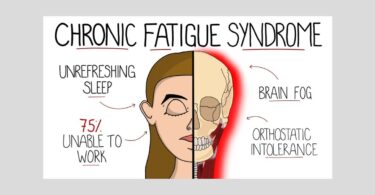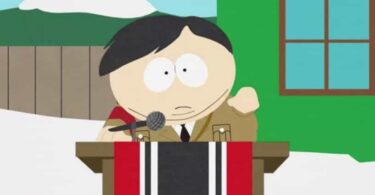(This paper is a response to Jeroen Holtkamp’s : Is the Miasm Theory a Valid Concept of Chronic Disease?, Hpathy Ezine Jan 2012 1)
Jeroen Holtkamp’s substitution of developmental theory for miasmatic theory as a basis for understanding the true nature of chronic disease suffers from exactly the irrelevance that he accuses miasmatic theory of having to homoeopathy’s basis, the law of similars. It can at least be argued that Hahnemann’s description of chronic miasms (a) rests firmly in an understanding of acute miasms and of the progress of chronic disease both with and without treatment and (b) is most definitely an attempt to assist the prescriber to use the law of similars as the sole basis for prescription, rather than augment it with other kinds of indication for a medicine. The same cannot be said of the substitution of developmental theory, which (a) provides no pathogenetically useful information and (b) provides no means relevant to the law of similars for refining or deepening the case of the patient before the practitioner.
 It’s understandable that Holtkamp should be concerned about the influence of miasmatic theory in light of concern that the theory should form the foundation of the materia medica. But such was never Hahnemann’s intent. Of course, Hahnemann’s Chronic Diseases in particular takes his understanding of miasms into unmistakeable account; but the basis of the materia medica, i.e. of indications for the use of each medicine in homoeopathy, remained and remains the pathogenetic effects of the medicine.
It’s understandable that Holtkamp should be concerned about the influence of miasmatic theory in light of concern that the theory should form the foundation of the materia medica. But such was never Hahnemann’s intent. Of course, Hahnemann’s Chronic Diseases in particular takes his understanding of miasms into unmistakeable account; but the basis of the materia medica, i.e. of indications for the use of each medicine in homoeopathy, remained and remains the pathogenetic effects of the medicine.
The strength in Holtkamp’s article lies in its careful acknowledgement of the primacy of the individual’s symptoms over any theoretical “group” symptoms not actually pertaining to the individual patient. Unfortunately that strength is undermined by several errors of logic. The first, and the basis of Holtkamp’s entire critique of miasmatic theory, is his inference that application of miasmatic theory encourages use of such symptoms. Had Holtkamp read Chronic Diseases with an unprejudiced eye, he would have found in it no confirmation of that presumption, but instead Hahnemann’s exhortations, variously expressed, to rely on the symptoms of the patient.
The second error of logic that erodes the value of Holtkamp’s opening acknowledgement of the primacy of individual experience over any theoretically assigned symptomatology, is to assume without evidence that the individual life has an individual “purpose”. From this unproven assertion moreover, Holtkamp jumps without logical connection, to the conclusion that health and disease too must have an individual purpose.
In other words, Holtkamp’s thesis concerning the relevance of human development is based upon invalid logic proceeding from unsubstantiated assumptions. Furthermore, the criticism paving the way for that thesis, to the effect that applying Hahnemann’s theory of chronic miasms requires (or even permits!) use of medicines without a basis in the symptoms of the patient, proceeds entirely without evidence from the untested presumption that Hahnemann directed the practitioner to use not only the individual’s symptoms but also “group” miasmatic symptoms as a basis for prescription. Holtkamp’s attempt to substitute developmental theory for the law of similars rests, moreover, on such groundless, vague, and unsubstantiable assertions as “If a disease process is stopped from following its course, a developmental process is hindered“.
So, whilst Holtkamp’s perspective on the importance of understanding developmental processes is a valuable one, Holtkamp falls into the very trap he accuses Hahnemann of having fallen into: of relying upon conjecture in lieu of fact.
Another instance of such groundless conjecture is Holtkamp’s use, after criticising miasmatic theory unjustly on the grounds that it artificially divided the materia medica, of athreefold materia medica, divided upon grounds of religion and folklore and his own conviction.
All of this conjecture, fascinating as it is as a study of unexamined assumptions, is hardly the fulfilment of his opening promise to examine miasmatic theory and its possible substitute with an eye to the law of similars.
Add to this casualness for factual information Holtkamp’s conjectural basis in the purpose of life, health, and disease; his confounding of general symptoms with the symptoms resulting from physical pathology; and his confusion of a patient’s possibly psychologically significant expressions, with stages of human development, and what Holtkamp’s argument suggests is that, rather than approaching the question of miasms’ relationship to the law of similars from any basis in evidence, the critic has approached it from a wish to substitute some other theoretical foundation.
Clearly, that theoretical foundation has been packaged beforehand for the purpose. Moreover, in the vague form in which its application has been suggested, it is so far indistinguishable from the sympathetic magic of Rajan Sankaran: not using the patient’s symptoms as the sole basis for prescription but instead relying on the practitioner’s impressions, presumptions, cultural and religious traditions, and other filters to improve upon the facts that could otherwise be observable in the patient’s presentation. Reference to such flimflam as self-awareness is a reflection not on the relevance of miasmatic theory, but on Holtkamp’s insight into homoeopathy and its practice.
In closing, I’d like to note that Hahnemann’s common use of Sulphur at the beginning of treatment in chronic illness in no wise confirms the view that he prescribed Sulphur on the basis of its similarity to symptoms irrelevant to the patient. We might, however, do well to consider the extent to which, in prescribing Sulphur thus, Hahnemann was taking advantage of the accessory symptoms that an approximate prescription of Sulphur would elicit, in accordance with their usefulness to a keen observer and exact prescriber taking into account the Organon‘s §§ 167–168 and 181–184, which enable the physician to make proper use of them.
1. Is The Miasm Theory A Valid Concept Of Chronic Disease?
https://hpathy.com/homeopathy-papers/is-the-miasm-theory-a-valid-concept-of-chronic-disease







Dear Sir, you have correctly evaluated and given a good response to the article, ‘Is the miasms theory a valid concept…’.’ Unsubstantiated’ is the right word describing the claims which are rather idiosyncratic opinion of the author.